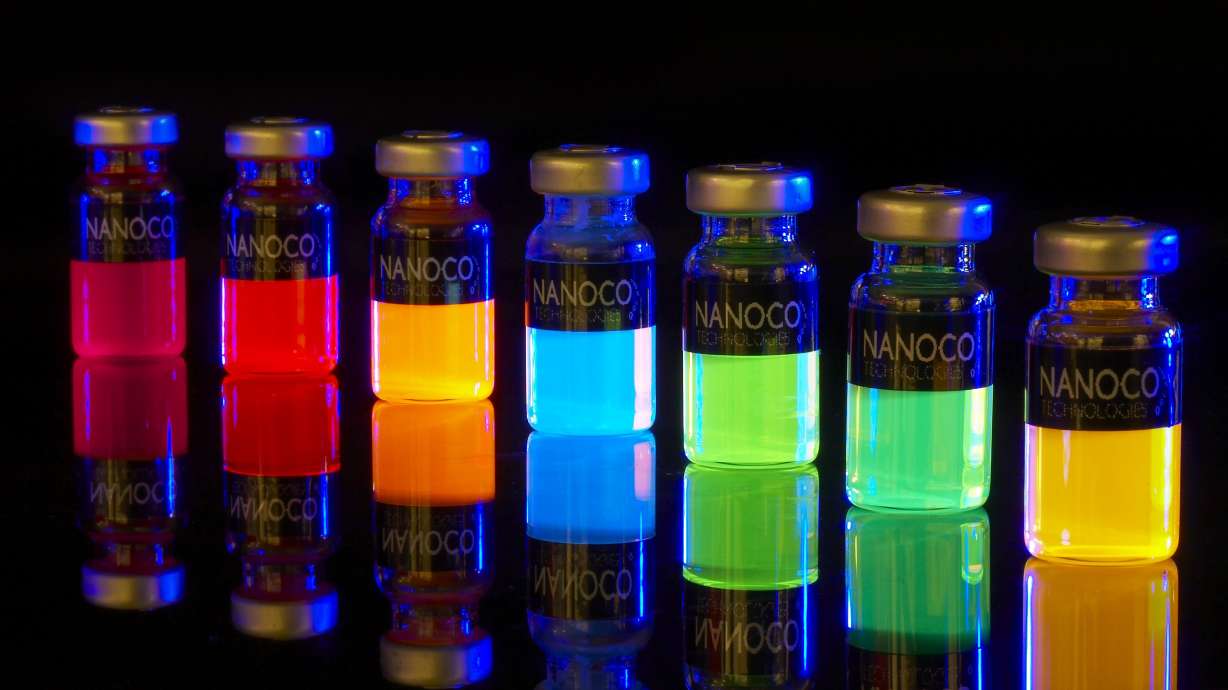Estimated read time: 3-4 minutes
This archived news story is available only for your personal, non-commercial use. Information in the story may be outdated or superseded by additional information. Reading or replaying the story in its archived form does not constitute a republication of the story.
NEW YORK (CNN) — Yearn for the warm yellow light of an old energy-hungry Edison incandescent light bulb? Find the white-blue glare of a modern LED bulb too harsh?
Quantum dots are about to change all of that.
These electronic crystals are so tiny that 10,000 of them span just the width of a human hair.
They are small enough to operate in the fascinating realm of physics called quantum mechanics, and possess unique optical qualities that could change everything from TV screens and phone displays to medical imaging and solar panels.
Even the humble light bulb is unlikely to escape their revolutionary clutches.
Shine a light
Quantum dots emit one specific color when light goes through them. The color can be finely tuned and is determined by their size.
The bigger ones — about 50 atoms thick — glow red, while the smallest — 30 atoms or so — glow green.
Just a subtle tweak in the size of the particle can change its color right across the spectrum of the color wheel: "We can tune these dots to fluoresce at any color that a given application requires," says Michael Edelman, CEO of UK-based Nanoco, a quantum dot manufacturer.
Applied to TVs, this technology has several advantages over traditional LCD panels, as the colors are more accurate and the images more vibrant.
On top of that, they are more energy efficient: "Quantum dots require a tiny amount of energy to operate," Edelman told CNN.

A quantum dot is a semiconductor nanostructure that confines the motion of conduction band electrons, valence band holes, or excitons (bound pairs of conduction band electrons and valence band holes) in all three spatial directions. (Source: Science Daily)
"Whenever you have a material that gives off a very bright pure light with a tiny amount of energy, people start getting excited."
Heavy metals
Display manufacturers are lapping up the technology as quantum dots can improve screen quality at a fraction of the cost of other display technologies, such as OLED.
But while they have been around for more than a decade, quantum dots have had a slow rate of adoption because they contain cadmium, a toxic heavy metal that faces stiff regulations in many parts of the world.
Edelman said Nanoco has spent more than $50 million and the better part of 15 years developing quantum dots that are not only free of heavy metals but can be produced in the kind of quantities that make it attractive for manufacturers.
"Any new material that comes out will have this problem," he explained.
"Every year weird and wonderful things are produced in labs around the world. But you have to make enough of this stuff that companies like Samsung can get it in the quantities they need.
"And that was a key problem we solved."
Whenever you have a material that gives off a very bright pure light with a tiny amount of energy, people start getting excited.
–Michael Edelman, CEO Nanoco
Extracting cadmium from the process, however, has changed the playing field.
Medical applications
Now that it can be mass-produced without heavy metals, the material is safe for medical diagnostics as well.
Doctors have already worked with quantum dots to illuminate molecules that can bind themselves to cancer tumors, allowing the surgeon to easily distinguish the healthy from the diseased tissue.
"It's very rare that you see a material that is a true platform technology, meaning the same material can be used in cancer imaging, to make TVs, in security inks and in solar cells. That's unusual," says Edelman.
Lighting the way forward
At the moment the display industry has shown the greatest interest in the quantum dot technology, but the lighting industry and the medical diagnostic industry are the next in line.
One of the greatest advantages to any industry from quantum dots is that they take 30% less energy to produce the same amount of light. Used in mobile phone displays, quantum dots stand to vastly improve battery life.
And as for the old incandescent light bulb, quantum dots could bring that old yellow-tinged glow back to living rooms around the world.
"We can tune quantum dots to make that old Thomas Edison glow we all know and love," Edelman said.
The-CNN-Wire ™ & © 2015 Cable News Network, Inc., a Time Warner Company. All rights reserved.









